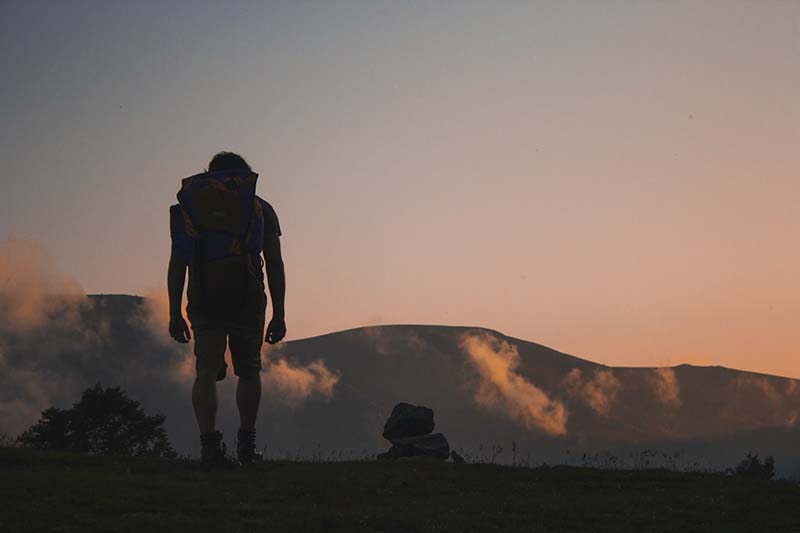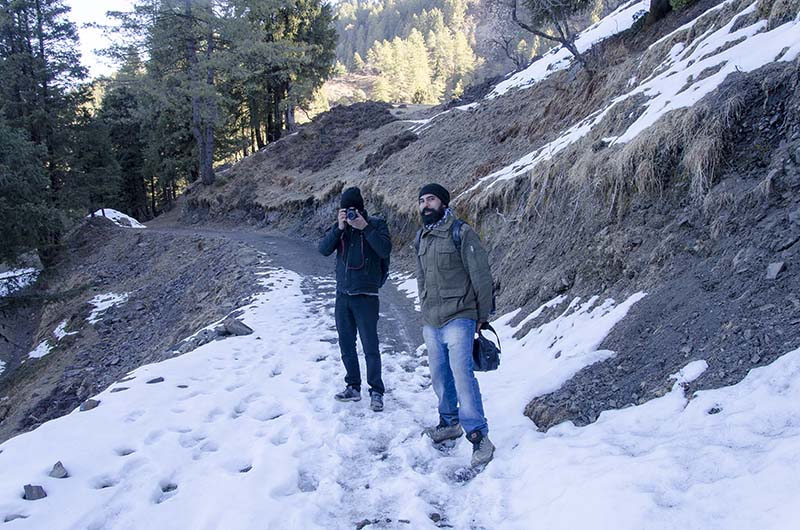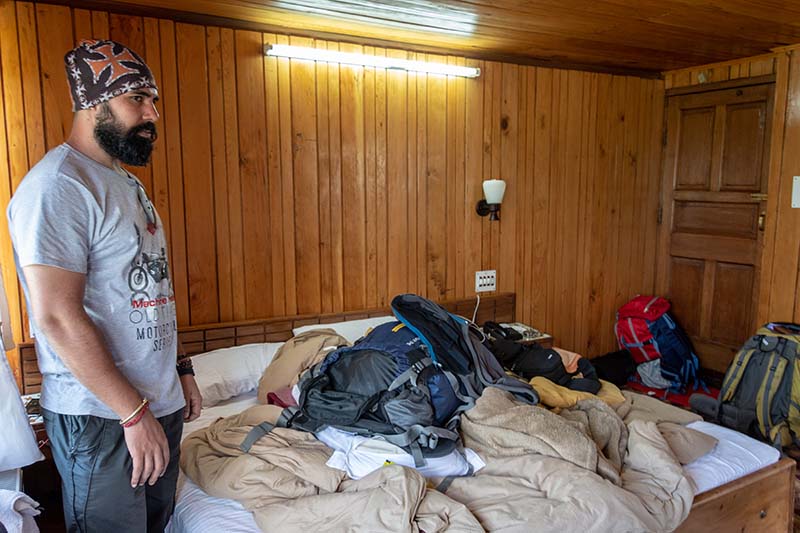If this is going to be your first backpacking trip, then the question of what to pack or not can certainly be the one to baffle you. When you are putting your stuff in your backpack, the first thing to remember is that you just cannot afford to miss an essential item that you may need on the trip. But at the same time, you also cannot just bring about everything because all of it would have to be carried on your back. So what do you do then? Here are some best tips and practices on how to pack your backpack effectively.
A backpacking trip means that you bring just the right amount of items that you need for survival. A well-packed pack will be much easier to carry and will not put unnecessary stress on your body. It will also make it convenient for you to find the item you need without having to empty the entire thing.
You should also know that there is really no right or wrong way to go about it. It is all about what works best for you. What you are packing will also be different for each trip, depending on the number of days and the weather. But there are certain guidelines that will always apply.
Quick Navigation
How to Pack your Backpack
The first most important task you should is to get a backpack that suits your needs the most (if you do not already own one). There are numerous types of packs available in the market but my recommendation would be to buy an internal frame pack of between 50 to 80 liters.
Also Read: Essential Items for Camping Trip in Cold Weather
Remember, you should always buy the best backpack you can afford. It may cost you a little money at the time but it will be totally worth it. Think of it as a long term investment.
An internal frame pack is the one where support rods are built into the backpack and hidden from view. These packs are comparatively lighter and easier to carry. They sit on your back comfortably and are also more durable. A capacity size of 50 to 80 liters will be sufficient for a trip lasting between 3 to 7 days.
Do not order it online though. You should go into an actual store and buy it from there. Before finalizing the purchase, put some weight into a pack, wear it, and then try walking around in the store for a while. This will tell you whether the pack was comfortable enough for you and if you should buy it.
Make a Checklist of Items to Carry
The first thing to do is to closely review items that you will need. Prepare a trip itinerary and depending on the nature and duration of the trip, decide how many items you will truly need.
Do not believe that you should carry an item just in case if you needed it. Instead, your plan should be that if you can live without a certain thing for a couple of days, then you do not need to carry it.
In terms of clothes, don’t pack more than 1 week’s worth of clothing. Bring clothes that can be worn irrespective of when and where. If you aren’t heading into a cold-weather area, your preference should be of light clothes and the ones that can dry faster.
Also Read: 10 Things to Remember when visiting India
The same rule applies to shoes as well. Bring a pair that does not need you to look for another one and can be worn pretty much anywhere and everywhere.
I once went on a backpacking trip and all that I carried were a few knee-length shorts, not even a single trouser. They were lighter, required lesser space, and were way more comfortable.
Do not bring anything expensive, be it jewelry or a costly electronic item. Leave all of that behind and carry only bare essentials.
Categorize the Items
The next step would be to divide your packing into categories The first category would be of items that you will not need until you reach your destination. This can be pushed down towards the bottom of the pack.
The second category would be of items that you may or may not need a few items in the day and they should be kept where they are easily accessible, preferably towards the top.
The third category will be of things that you will surely need on the way, things like your sunblock lotion, soap, hand sanitizer, water bottles, phone, earphones, etc. These items should find a place in the side pockets. For your camera and cell phone, you will have to be the best judge on where you think it would be safest.
Again, this is just a general guideline but the idea is to make items easily available when you need them. If your packing wasn’t divided, you may end up emptying your entire backpack looking for something as simple as a charger.
Also Read: 11 Tips On Making New Friends While Traveling
Utilize the space Well
The space you have available is limited and you will have to be smart about how you are packing your items. You should utilize the space in the best possible manner. For example, keep the bottles in the side pockets. It’s often better to roll clothes instead of folding to save space.
Your boots and jacket must never be in your backpack and you should be wearing them. If it was a little warm to be wearing the jacket, just tie it around your waist or throw it over your shoulders but do not stuff it in your backpack.
A third item that can fall in the heavy category is a laptop which I have seen a lot of backpackers carry off-late. In my opinion, this is not something that you should be bringing on a backpacking trip. You will unnecessarily run the risk of the laptop getting damaged or stolen and it will just increase the load on your back. Most of all though, brining a laptop really beats the purpose of the trip.
For a towel, do not pack the one you use at home. Search for a lightweight travel towel. These weigh much less than a regular towel and also need lesser space.
Do not pack what you can Buy
Unless you were going on a trekking trip or heading to a remote region, you should be able to buy almost everything that we need on a daily basis. So when you are making a list of items to pack, exclude items that you know can be bought later.
A prime candidate for this are items that you are not sure if you will really need. If you did, then you can buy them. If you didn’t, you never packed them. Food, snacks, shampoo are some other items that you should buy later rather than packing.
Lock It
This is something that often gets missed but must be paid close attention to. When you are buying a backpack, you should get one that has lockable zippers. I personally have had stuff stolen from my bags during a flight more than once. When out wandering, you will not always be able to keep a close eye on the pack.
The best thing to do would be to get key combination locks and keep your pack locked and secure. I am saying key combination locks because then you will not have to worry about the keys as well. Remember, if you lose the keys, you will have to break the zipper, rendering it useless.
Also Read: Safety Tips for Solo Female Travelers
Save some Space
Do not pack all the way till the top. Try to keep a quarter of your bag empty. You will some space to bring back souvenirs from your trip. It also makes loading and unloading easier.
Pack Right
Lighter items like your clothes and sleeping bag should go to the bottom; and the heavier stuff towards the middle, close to your back. If you packed the heavy items at the bottom, your backpack will just pull you down; and it will feel like you are dragging it.
If you put the heavy items at the top, it will transfer all the stress and the weight to your shoulders. A better way hence will be to keep it at the center of your pack, as close to the back as possible.
If there is anything in your pack that is either pointy or has handles or bars sticking out of it, you should wrap it first so that you do not end up with anything poking you painfully.
Distribute the weight evenly between the left and right sides. Items that do not fit inside can be tied to the pack outside, like a walking pole or a Tripod. But do not overdo it. You should not have too many items dangling from your pack.
Plastic Bags
To be on a safer side, you should also pack some plastic bags. These will come handy when you have to put things like dirty shoes, wet clothes, or leaking bottles in your pack. If not, you can still use these to add another layer of waterproofing stuff that you cannot afford to get wet.
Also Read: List of Necessary Items to Carry for Trekking
Pack in Time
Last but not least, do not pack at the last minute. If you were just hurrying through it, you will either overpack or miss some essential items. Pack at least a day before the trip.
How to Pack your Backpack – Conclusion
I hope the information above on how to pack your backpack was of help. If you have any questions or need any other details, please feel free to ask in the comments section below, or at our Community Forum, and I will be happy to answer. If you have other backpacking tips that can be of help to others, please do kindly comment and mention.



